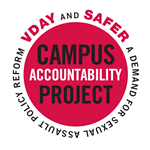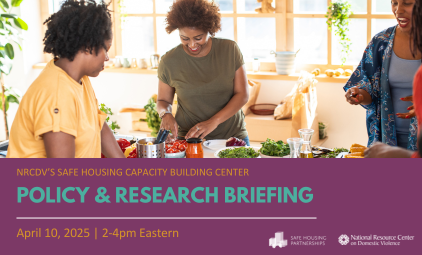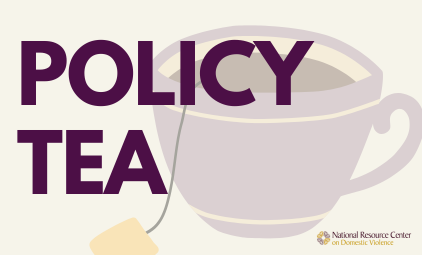BACK TO SCHOOL & CONTINUING EDUCATION![]()
As fall approaches, many of us begin to turn our energy to educational pursuits – whether we are going back to school after summer break, supporting children who are returning to school, or considering ways to broaden our professional knowledge through continuing education.
While college campuses certainly provide opportunities for those seeking academic success, we must also recognize the potential risks that students in this environment may face. College students experience sexual and dating violence at staggering rates and face unique obstacles in accessing services to escape an abusive relationship.
Break the Cycle’s The Safe Space offers a wealth of resources and information on College Dating Violence and SAFER (Students Active for Ending Rape) provides information for engaged students interested in effecting social change in schools and on campuses. The organization provides an online library of resources, program mentoring, and keeps a policy database: the Campus Accountability Project. With regard to legal remedies, the NSVRC provides guidance on Title IX of the Education Amendments of 1972, and Break the Cycle outlines the responsiveness of state laws to the unique needs of teens and young adults.
offers a wealth of resources and information on College Dating Violence and SAFER (Students Active for Ending Rape) provides information for engaged students interested in effecting social change in schools and on campuses. The organization provides an online library of resources, program mentoring, and keeps a policy database: the Campus Accountability Project. With regard to legal remedies, the NSVRC provides guidance on Title IX of the Education Amendments of 1972, and Break the Cycle outlines the responsiveness of state laws to the unique needs of teens and young adults.
 One exemplary campus-based prevention approach is The Red Flag Campaign, a great tool developed by the Virginia Sexual and Domestic Violence Action Alliance. In the UK, End Violence Against Women has initiated A Different World is Possible, which calls for long-term and targeted action to prevent violence against women and girls in educational institutions.
One exemplary campus-based prevention approach is The Red Flag Campaign, a great tool developed by the Virginia Sexual and Domestic Violence Action Alliance. In the UK, End Violence Against Women has initiated A Different World is Possible, which calls for long-term and targeted action to prevent violence against women and girls in educational institutions.
In this eNewsletter, we draw attention to new and existing resources on VAWnet that address dating and sexual violence on campus. We highlight promising initiatives and campaigns that are working to help prevent campus violence. And we provide access to several opportunities for continuing education on violence against women to promote the professional development of those working in the field.
HIGHLIGHTED CAMPUS-FOCUSED RESOURCES
Campus Sexual Violence Resource List by the National Sexual Violence Resource Center (2010) includes resources on campus primary prevention, policy, statistics, and education and training tools.
A Safer Campus: A Guidebook for Prevention and Response to Sexual and Intimate Partner Violence and Stalking for Ohio Campuses by the Ohio Board of Regents (August 2010) identifies key best practices for short and long term action recommendations for colleges and universities to implement in four focused areas: Preparedness, Prevention, Response and Recovery.
Campus Toolkit by Futures Without Violence helps college students organize campus events, programs, and training on violence against women and its link to reproductive health.
A Case Study: Creating a Campus Violence Prevention Program by Linda Langford, Sc.D. and Dorothy Edwards, Ph.D. for the Higher Education Center (2010) is a webinar recording that reviews the principles and process of beginning a violence prevention program on a college or university campus.
Reporter’s Toolkit: Investigating Sexual Assault Cases on Your Campus by The Center for Public Integrity (2010) offers information on laws and policies, basic information on the Clery Act, and additional resources for investigating campus sexual assault.
Sexual violence at school and on campus by the National Sexual Violence Resource Center (2011) includes resources and articles related to sexual violence at school and on campuses developed after the new Title IX guidelines were released in 2011.
Gender-Based Violence & Harassment: Your School, Your Rights
by the American Civil Liberties Union, Women’s Rights Project (May 2011) provides an overview of students’ rights related to gender-based violence and harassment.
Isn’t she a little young? by the VA Department of Health, Division of Injury and Violence Prevention is an interactive website providing information on statutory rape for youth, parents, and other adults.
The Case of Beckett Brennan by 60 Minutes for CBS News (April 17, 2011) shares the story of a woman who reported her experience of campus sexual assault and took it to a university judicial review board.
Using Social Media Strategically for Effective Alcohol and Other Drug and Violence Prevention by Tom Workman and Rebecca Allen for the Higher Education Center (February 2, 2011) is a webinar recording addressing the process of incorporating social media into prevention work on college campuses.
CONTINUING EDUCATION OPPORTUNITIES
The National Sexual Assault Conference will take place September 14-16, 2011 in Baltimore, Maryland.
The National Women of Color Economic Policy And Leadership Summit for Anti-Violence, Economic Justice, and Social Justice Advocates is scheduled for September 14-16, 2011 in Washington, DC.
The 2nd World Conference of Women’s Shelters will be held February 27 – March 1 2012 in Washington, DC.

The Women of Color Network (WOCN) will host the 2012 National Call to Action Institute and Conference in July 9-13, 2012 in Minneapolis, MN. Those interested in participating should complete the WOCN 2012 National Call to Action RSVP Survey.
For more opportunities, see the VAWnet Events Calendar or the calendars of our partner organizations: NSVRC and MINCAVA.
TA QUESTIONS OF THE MONTH
August 2011: How do I support safe housing for people exposed to sexual violence?
According to a study of homeless and marginally housed people, 32% of women, 27% of men, and 38% of transgendered persons reported either physical or sexual victimization in the previous year (Kushel et al., 2003).
Check out this month’s question to learn about the importance of safe, affordable housing for victims and survivors of sexual violence.
July 2011: How can I incorporate experiential or alternative activities into summer programming with domestic violence survivors?
The garden gives me air. I breathe fresh air. It relaxes me. I return to life. I stop now and notice the flowers.” ~ Survivor’s reflection on her gardening experience at a domestic violence shelter, excerpted from Growing Food, Healing Lives: Linking Community Food Security and Domestic Violence.
Check out the July question to share your ideas about innovative approaches to provide a more holistic, engaging and comprehensive set of services to victims and survivors.
NEW SPECIAL COLLECTION
Intimate Partner Homicide Prevention  (July 2011) explores the most tragic consequence of domestic violence and offers a variety of tools and information towards its prevention.
(July 2011) explores the most tragic consequence of domestic violence and offers a variety of tools and information towards its prevention.
“If I die, I want you to tell the world what happened to me. I don’t want other women to suffer as I have suffered.” ~ Maria Teresa Macias
RECENT ADDITIONS
View all recent additions to the VAWnet library. Highlights include…
Partners in Social Change Newsletter: Engaging Men by the Washington Coalition of Sexual Assault Programs (WCSAP), Sexual Assault Prevention Resource Center (Summer 2011)
World report on disability by the World Health Organization and the World Bank (2011)
Women and Trauma: Report of the Federal Partners Committee on Women and Trauma by the Women and Trauma Federal Partners Committee (June 2011)
Statutory Compilation: Presence of Victim Advocate in Sexual Assault Exam by AEQUITAS: The Prosecutors’ Resource on Violence Against Women (2011)
View a printer-friendly version of this eNewsletter.















